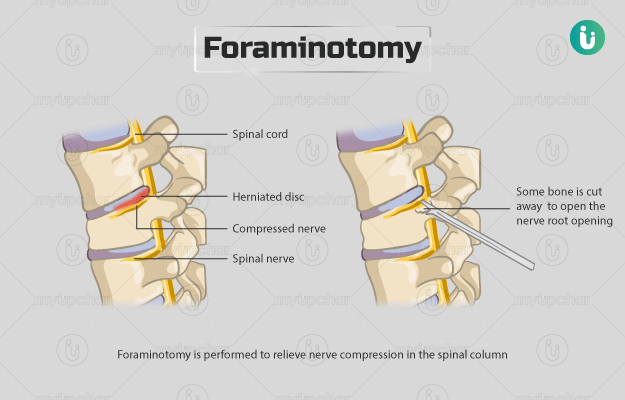Summary
Foraminotomy is performed to relieve nerve compression in the spinal column. The spinal column is made up of a series of vertebral bones stacked one over each other vertically. Within the spinal column, a tunnel is formed that houses and protects the spinal cord. Spinal cord is a bunch of nerve fibres that receives and sends signals between the brain and other parts of the body. Nerves fibres exit the spinal column through openings called neural foramen in the vertebrae. Certain conditions such as foraminal stenosis narrow the neural foramen leading to compression of nerve fibres and symptoms that can affect the person's day-to-day activities.
Foraminotomy involves creating an incision in the skin over the affected part of the spine to access the compressed nerve. The surgeon then cuts and removes the blockage to relieve the symptoms of nerve compression. You will be discharged in one to three days following the surgery. Physical therapy will help regain your motion, and speed the recovery process.






































